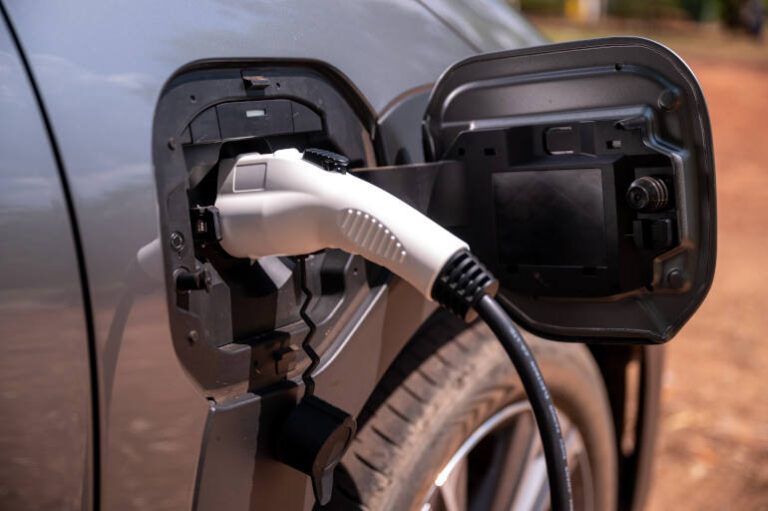In the rapidly evolving landscape of electric vehicles (EVs), the discussion often centres on the transition from internal combustion engines to electric powertrains. However, a crucial aspect that is sometimes overlooked is the optimisation of fleet utilisation, especially when it comes to electric vehicles. Kirsten Corson, Chair of Drive Electric in New Zealand, brought this issue into sharp focus during a recent Fleet News Group podcast, highlighting how maximising the use of each vehicle can significantly enhance the sustainability and economic viability of EVs.
The underutilisation of fleet vehicles
Corson emphasised a startling statistic that underscores the inefficiency in current fleet management practices: on average, vehicles in New Zealand and Australia are used less than five per cent of the time. This low utilisation rate is a common issue across fleets globally, leading to substantial capital being tied up in depreciating assets that are not fully leveraged. The question, therefore, is not just about transitioning to electric vehicles but also about ensuring that these vehicles are used optimally.
“Often, I see businesses patting themselves on the back for integrating EVs into their fleets,” Corson noted. “But the bigger picture is about optimising those fleets. It’s not just about electrification; it’s about utilisation. If a car is only being used a fraction of the time, then we’re not truly realising its potential, whether it’s an EV or not.”
The long life cycle of electric vehicles
One of the distinct advantages of electric vehicles is their long life cycle. Unlike traditional vehicles, which may face significant wear and tear from internal combustion engines, EVs are designed for longevity. This is particularly true for their electric drivetrains, which have fewer moving parts and therefore less opportunity for mechanical failure. Corson highlighted that by focusing on fleet optimisation, businesses can extend the useful life of an EV across multiple ownership cycles, further enhancing its environmental and economic benefits.
“An electric vehicle should not just be viewed as a short-term investment,” she explained. “We need to start thinking about the entire life cycle of the vehicle. After a few years in a corporate fleet, that vehicle can be repurposed for use in a charity, and later even in social housing. It’s about maximising the asset over its entire lifespan, not just the first few years.”
This approach aligns with the principles of the circular economy, where resources are used for as long as possible, extracting maximum value before recovery and regeneration. By repurposing EVs across different sectors and users, the overall carbon footprint of the vehicle is reduced, making it a smarter and more sustainable investment.
The role of policy in fleet optimisation
Corson also touched on the importance of policy in driving both the adoption of electric vehicles and the optimisation of fleet utilisation. While the adoption of EVs has been supported by various government incentives and policies, there is still a significant gap when it comes to policies that encourage or even require businesses to report on fleet utilisation.
“In New Zealand, we have seen substantial uptake of EVs, driven in part by demand-side policies and incentives,” she said. “However, I would love to see businesses, particularly in the public sector and publicly listed companies, be required to report on fleet utilisation. How are these assets being used? Over a 10-hour workday or a 24-hour period, what percentage of the time is the vehicle actually in use? That’s the kind of data we need to ensure that our fleets are not just electrified but also optimised.”
Such reporting would not only encourage better utilisation of vehicles but also help businesses make more informed decisions about their fleet needs. By understanding how much each vehicle is being used, companies can make strategic decisions about whether they need to acquire additional vehicles or if they can do more with fewer cars, thereby reducing both costs and environmental impact.
The future of fleet management
Looking ahead, Corson sees fleet optimisation as a key focus for Drive Electric and the broader industry. She believes that as more businesses and fleets transition to electric vehicles, the conversation will inevitably shift towards how these vehicles are utilised.
“Electric vehicles offer incredible benefits, but we need to ensure that we’re getting the most out of them,” she said. “That means not just focusing on the transition to electric but also on how we manage these vehicles over their entire life cycle. It’s about stewardship—taking responsibility for the full journey of the vehicle, from the corporate fleet to its eventual use in other sectors.”
In conclusion, as businesses and governments alike continue to champion the transition to electric vehicles, it is crucial that fleet utilisation is part of the conversation. By maximising the use of each EV, we can unlock their full potential, ensuring that they deliver not just on environmental promises but also on economic and social fronts. Kirsten Corson’s insights serve as a timely reminder that the future of transport is not just electric; it’s optimised, efficient, and sustainable.







